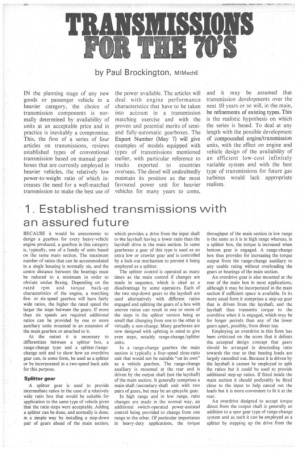TRANSMISSIONS FOR THE WS
Page 32

If you've noticed an error in this article please click here to report it so we can fix it.
by Paul Brockington, MIMechE IN the planning stage of any new goods or passenger vehicle in a heavier category, the choice of transmission components is normally determined by availability of units at an acceptable price and in practice is inevitably a compromise. This, the first of a series of four articles on transmissions, reviews established types of conventional transmission based on manual gearboxes that are currently employed in heavier vehicles, the relatively low power-to-weight ratio of which increases the need for a well-matched transmission to make the best use of the power available. The articles will deal with engine performance characteristics that have to be taken into aceount in a transmission matching exercise and with the proven and potential merits of semiand fully-automatic gearboxes. The Export Number (May 7) will .give examples of models equipped with types of transmissions mentioned earlier, with particular reference to trucks exported to countries overseas. The diesel will undoubtedly maintain its position as the most favoured power unit for heavier vehicles for many years to come, and it may be assumed that transmission developments over the next 10 years or so will, in the main, be refinements of existing types. This is the realistic hypothesis on which the series is based. To deal at any length with the possible development of compounded engine/transmission units, with the effect on engine and vehicle design of the availability of an efficient low-cost infinitely variable system and with the best type of transmissions for future gas turbines would lack appropriate realism.




























































































